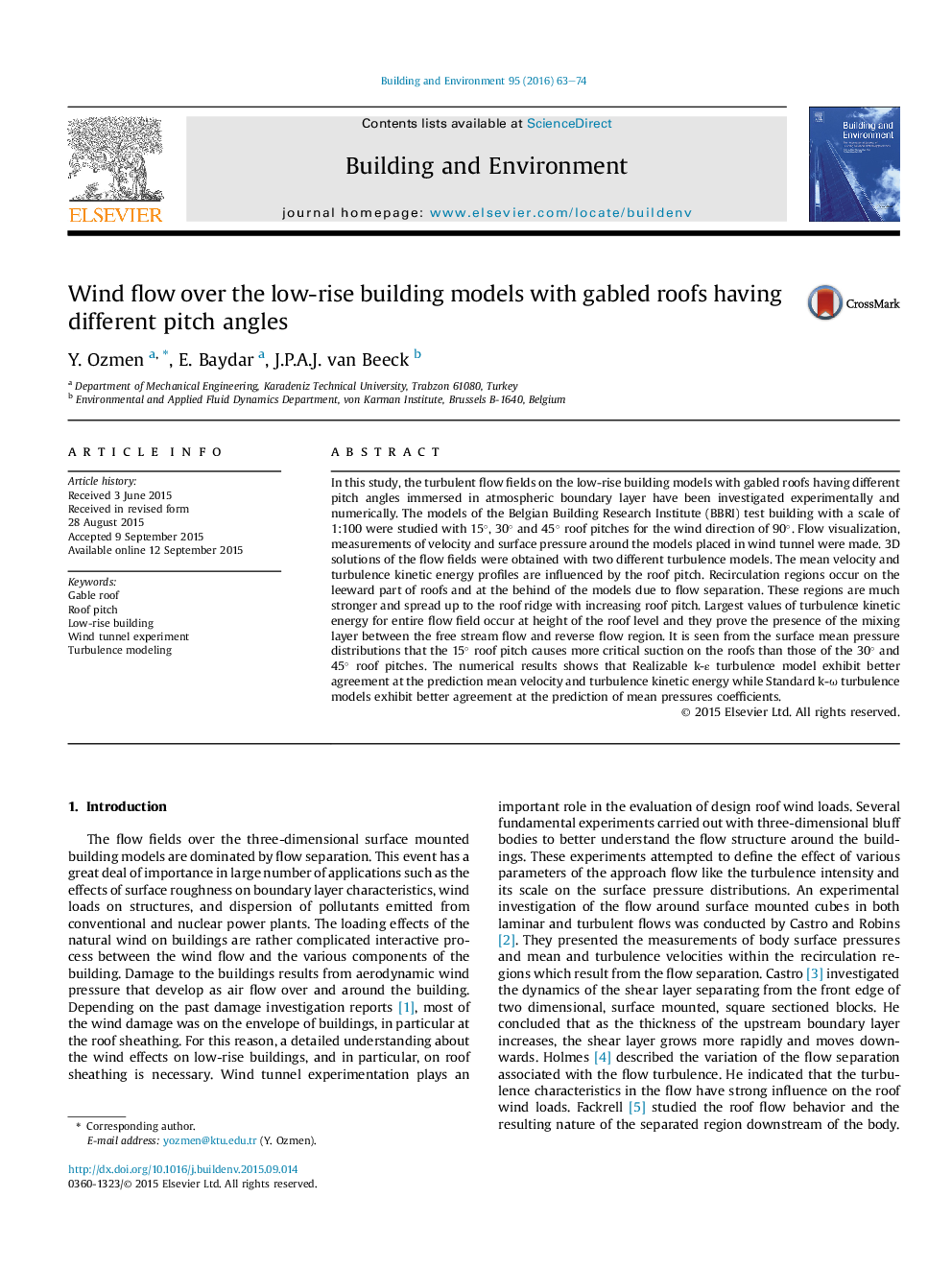| Article ID | Journal | Published Year | Pages | File Type |
|---|---|---|---|---|
| 247755 | Building and Environment | 2016 | 12 Pages |
•The mean velocity and turbulence kinetic energy profiles are influenced by the roof pitch.•Recirculation regions occur on the leeward part of roofs and at the behind of the models due to flow separation.•15° roof pitch causes more critical suction on the roofs than those of the 30° and 45° roof pitches.•Realizable k-ε turbulence model exhibit better agreement at the prediction mean velocity and turbulence kinetic energy.•Standard k-ω turbulence models exhibit better agreement at the prediction of mean pressures coefficients.
In this study, the turbulent flow fields on the low-rise building models with gabled roofs having different pitch angles immersed in atmospheric boundary layer have been investigated experimentally and numerically. The models of the Belgian Building Research Institute (BBRI) test building with a scale of 1:100 were studied with 15°, 30° and 45° roof pitches for the wind direction of 90°. Flow visualization, measurements of velocity and surface pressure around the models placed in wind tunnel were made. 3D solutions of the flow fields were obtained with two different turbulence models. The mean velocity and turbulence kinetic energy profiles are influenced by the roof pitch. Recirculation regions occur on the leeward part of roofs and at the behind of the models due to flow separation. These regions are much stronger and spread up to the roof ridge with increasing roof pitch. Largest values of turbulence kinetic energy for entire flow field occur at height of the roof level and they prove the presence of the mixing layer between the free stream flow and reverse flow region. It is seen from the surface mean pressure distributions that the 15° roof pitch causes more critical suction on the roofs than those of the 30° and 45° roof pitches. The numerical results shows that Realizable k-ε turbulence model exhibit better agreement at the prediction mean velocity and turbulence kinetic energy while Standard k-ω turbulence models exhibit better agreement at the prediction of mean pressures coefficients.
Graphical abstractFlow patterns around building models obtained with smoke-wire technique, Realizable k-ε turbulence model and Standard k-ω turbulence model (a,d,g) roof pitch of 15°, (b,e,h) roof pitch of 30°, (c,f,i) roof pitch of 45°.Figure optionsDownload full-size imageDownload as PowerPoint slide
